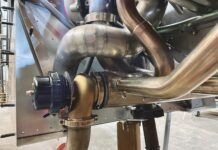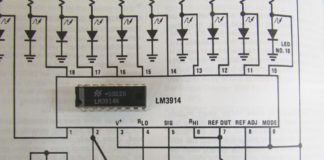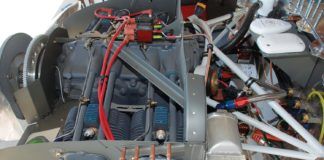Exhaust tech is both art and science.
There are some myths that remain strong among builders, and few are more persistent than those involving the simple-looking tubes that get air into and out of our engines. Tuning exhaust systems is largely science, but also involves some art. An expert on both sides of that equation is Allan H. Lockheed Jr. (yes, that Lockheed), who has built a reputation among all sorts of racers for the past quarter-century. He agreed to step me through the basics. Our big, slow-turning engines produce large slugs of burned gas, not an exhaust flow. Think of exhaust pulses as golf balls on a string, rather than water in a hose. The balls are the slugs of gas, and the length of the string between them is related to engine speed. Higher rpm equates to shorter strings, meaning less distance between each slug. (Intake behavior is similar; the balls are of lower energy and velocity, but higher pressure.)
Simple Designs
The simplest design does away with length and collector tuning altogether, uses the shortest pipes possible, and concentrates on getting heat away from things combustible and keeping poison gases away from the pilot. Its overriding parameter is pipe diameter, sized to optimize velocity. These systems are light and compact, and they offer a good compromise when a resonant-tuned system would be impractically large or obtrusive. When thats all you can do-limited by weight or packaging concerns-you do it and suffer some (possibly a little, possibly a lot) loss of performance and efficiency.
But beyond the chop em school, there are designs that attempt to capture and use the exhausts energy. One is wavelength-based nth-pulse matching, similar to what makes the sound in a pipe organ. For complicated reasons irrelevant to this discussion, nth-pulse designs can be made close to correct for cylinders in the 25- to 65-cubic-inch range. Much larger or smaller, and nth-pulse design pipes are either out of tune, or the tune is too weak to help.
Rather than concentrate on tuned length only, enlightened designers consider nth-pulse, but use what is called Helmholtz tuning, which considers the size of the cylinder and the diameter of the exhaust tube. (Hermann Ludwig Ferdinand von Helmholtz was a German physicist active in the mid-to-late 1800s.) Unfortunately, when the overall length of the exhaust is long enough for a faithful Helmholtz design (typically 6 to 8 feet in our 2400- to 3200-rpm engines), the amount of expended gas in the pipe is so large that the engine has to work hard just to pump it out.
Exhaust and Intake Interactions
Because a good exhaust system is just the second half of the engines external airflow system, some consideration of intake is required, but Lockheed says the optimal length of the intake tubes is usually too long to be practical. Instead, he sizes the intake runner entrance to get proper velocity at the critical area and good velocity at the valve seat. I design a Helmholtz-tuned length for the system, cross-check it against the volume in the runner and the nth-pulse length, and compromise to put the system into a reasonable overall range, he said. Its also important to ensure that the length you end up with isn’t operating against you in your favorite rpm range. The result? You can usually optimize this over about 30-35% of the engines rpm range, he says.
On the exhaust side, Lockheed says it’s extremely important that the valve lift , exhaust flow and pipe diameter are appropriate for the engine and rpm, and that exhaust velocity be higher than intake velocity. Because most of us aren’t in a position to design our own camshafts or valves, we’ll concentrate on the pipes. Lockheed’s favorite design uses one exiting pulses momentum to pull the next pulse out. Collector exhaust systems should be designed to work this way.
Resonant-collector tuning can be a good compromise and has real merit. Lockheed makes a living designing such things, and says that a good proven compromise is the Tri-Y system, where the two front exhausts connect, the two rears connect, and these sub-collectors then connect to a larger common collector. A four-into-one design can work as well, but its geometry sometimes precludes its use. (A six-cylinder opposed engine would use a six-into-three-into-one system. The same basics apply, but we’ll stay with fours for the rest of this column.)
Do You Have the Room?
At 2700 rpm, the perfect length is pretty long (roughly 7 feet). Lockheed notes that the mass of exhaust gas that must be pumped out of so long a tube usually consumes more power than tuned-length scavenging adds. There is hope. A collector at the end of shorter tubes can usually add enough energy from the collected pulses to overcome the reluctance of the high mass of exhaust entrained in each tube to get out of the way, he says.
Now, because there is space between any given cylinders exhaust pulses, you can add energy to the system by slipping more golf balls into the spaces, as you route the cylinders pipes together in a collector. Relatively short (3 to 5 feet long) primary tubes tuned to the engines ultimate greatest expected speed can effectively join in a collector, where they add energy to the gas outflow of the mating cylinder, increasing the velocity as they collect the gases, and preventing accumulation of lingering gases that the engine will have to pump out the end of the tube. Plus, the overall system has powerful resonant tuning over a wide rpm range.
The collector need not be much larger than the primary pipes, Lockheed says. A pair of 1.875-inch pipes, for instance, can feed a 2.125-inch collector. If you time the pulses by using the right pipe lengths, they will not collide with each other. There then will be more [exhaust gas] mass moving in the collector, so the kinetic energy will be higher, in a smaller, lighter exhaust system thats actually sucking on the exhaust ports. Collecting pipes will, at each junction, relatively diminish the primary frequency’s importance and increase the importance of the frequencies that are above and below it. That is why we collect four into one and why Tri-Ys (both fronts, both rears, and then those two pipes into a single collector) have been so successful-there are four overlapping lumps in the resonant frequencies across the band. Tip: You don’t want to swirl gases in the final collector, so don’t use the firing order to arrange the primaries order in the collector.
Todays Specials
There are special rules for special applications With a turbo, exhaust length tuning is for naught. You simply want the shortest, straightest tube (of the right diameter) to blast into the turbine wheel. Lockheed sums up: With a turbo, exhaust velocity and temperature are the name of the game. Downstream from the turbo, its the job of the exhaust pipe to route heat away from the rest of the airplane. Short is sweet, provided you don’t melt something. If you have two turbos, consider siamesing the downstream tubes-but only if your turbos spin different directions-so that you don’t swirl the exhaust streams into collision with one another. Attention to exhaust can be worth the trouble. You want to use the exhausts energy for extraction, rather than noise, Lockheed says. The benefit of a perfect tuned-resonance system with the proper cam can give volumetric efficiencies of 120-plus percent; a typical aircraft system today is probably close to 90%. Thats almost another cylinder on your four-cylinder engine, and more than an extra cylinder on your six. Could you use that?













